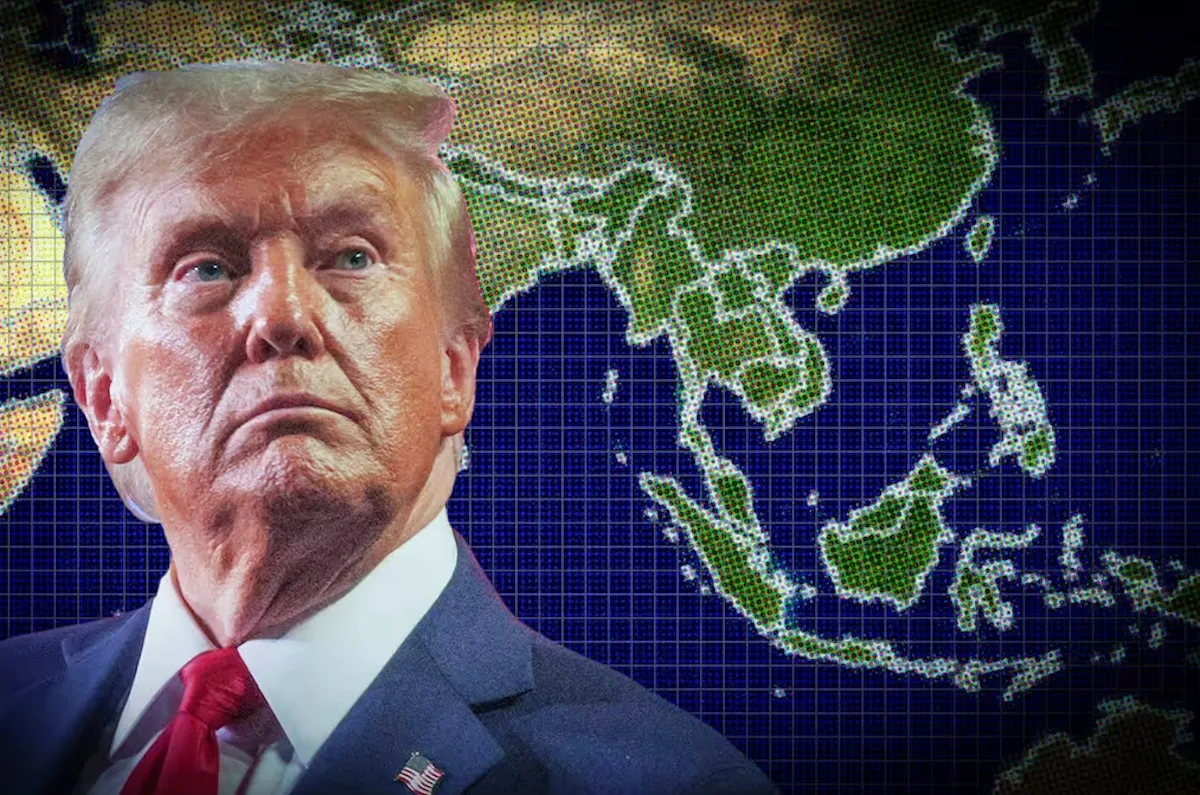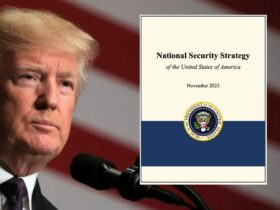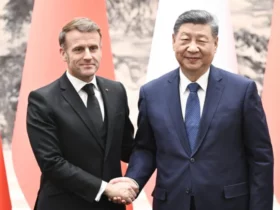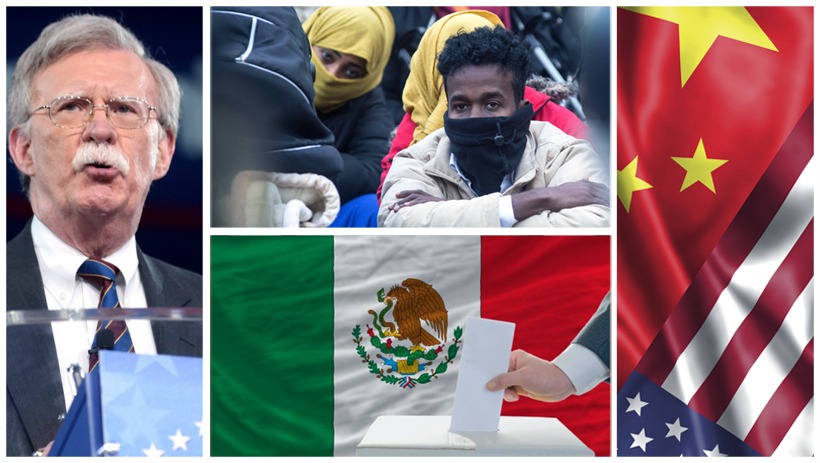Why Trump decided to seek rapprochement with China.
Why Trump decided to seek rapprochement with China.
By Sergio Rodríguez Gelfenstein
In 2011, long before entering active politics, Donald Trump tweeted that China was the enemy of the United States and that his goal was to destroy it. He later asserted, “On trade, the Chinese are cheats.” A year later, in 2012, he commented, “The concept of global warming was created by and for the Chinese to make US manufacturing uncompetitive.” Although four years later he “confessed” that the latter had been a joke, the aforementioned precedents are an expression of a clear bias against China.
Already during the 2016 presidential campaign, Donald Trump began blaming China for the US trade deficit and rising unemployment due to the flight of American companies to the Asian country, promising to take a “hard line” against Beijing and announcing the imposition of a 45% tax on products from China.
It was clear that Trump’s early protectionist and nationalist announcements were directed against China, which he blamed for globalization and the United States’s economic and social problems, ignoring the fact that the problem arose from the relocation of American companies to countries with lower production costs, allowing them to maximize profits. In China, large companies were also increasing their profits exponentially, simultaneously with declining wages. At the same time, China displayed a buoyant economy with high levels of growth that even allowed it to successfully confront the 2008 crisis and even made an important contribution to overcoming it globally.
In December 2016, in an interview for Nueva Sociedad magazine, prominent Peruvian economist Oscar Ugarteche, director of the Institute of Economic Research at the National Autonomous University of Mexico , conjectured what might happen, explaining it as follows: “The problem posed by Trump is not linked to the competition to sell abroad but to stop buying within the United States. It is more likely that they will place a significant tariff to stop exports from China and Mexico to the United States, ultimately harming the transnational companies that established outsourcing.(outsourcing) and the bilateral trade mechanisms that culminated in bilateral free trade agreements. The remarkable thing is that the decline in productivity in the United States was what led to outsourcing, and this, in turn, required trade liberalization to function properly. This process led to institutional changes with the creation of the World Trade Organization (WTO) in 1992. However, as it proved ineffective due to the loss of control by the United States, a new system was developed based on bilateral agreements such as the North American Free Trade Agreement (NAFTA) and the Free Trade Agreements (FTAs). The culmination is the Trans-Pacific Partnership (TPP), which constitutes a unilateral agreement for the benefit, primarily, of the United States itself. Therefore, the important thing will be to see the reaction of American multinational companies.
The tension generated by Trump became evident when, once elected, he spoke by phone with Taiwan’s “president” Tsai Ing-wen, who contacted him to congratulate him on his victory and to outline prospects for future economic, political, and security exchanges. A few days later, during an interview with Fox News, Trump reflected on the futility of abiding by the “one China” policy, accepted by Washington as a condition for establishing relations with Beijing during the Jimmy Carter administration in 1979, stating that the policy should not continue unless China made trade concessions.
Beijing’s response was swift. Through its Foreign Ministry, it suggested Trump exercise restraint and moderation regarding Taiwan and the “one China” policy so as not to cloud bilateral ties.
On January 13, 2017, a week before Trump’s inauguration, China issued a new and harsher warning through an editorial in the Global Times newspaper, urging the United States to halt its intervention in the South China Sea, stating that it would not hesitate to use its nuclear arsenal to defend its territorial claims, and warning that if diplomacy did not work, both countries should prepare for war. The article was understood as a response to Secretary of State-designate Rex Tillerson ‘s appearance before the Senate, in which he stated that the United States would not tolerate unilateral actions in the South China Sea, a clear allusion to Beijing.
Another state-run daily, China Daily, ironically commented on Tillerson ’s remarks: “It’s better not to take (Tillerson’s) remarks seriously because they are a mixture of naiveté, short-sightedness, prejudice and unrealistic political fantasies,” adding that putting Tillerson ’s ideas into practice would inevitably lead to war between the two countries. Chinese Foreign Minister Wang Yi, for his part, responded to his future colleague by saying that “China will not allow anyone to mess up the South China Sea and sow chaos in Asia.”
These events, which manifested an unusual “war of microphones,” began to reveal some of the scenarios that would mark Trump’s imprint on the highest office in the country. On another side of the situation, in a video released online in the middle of that month, the new president announced that he would withdraw the United States from the Trans-Pacific Partnership (TPP).This treaty, which had been signed in February 2016 by 12 countries representing 40% of the global economy, had not yet been ratified by the parties. According to the president-elect, “[The TPP] is a potential disaster for our country,” announcing that the United States would negotiate bilateral trade agreements that would generate jobs and industry in the United States again.
This perspective changed Obama’s equation regarding his aspiration for greater US leadership in Asia, given that China had been deliberately excluded from the treaty as a way to consolidate US hegemony in the Asia-Pacific region. In this regard, Obama administration Secretary of Defense Ash Carter went so far as to say that approving the TPP ” would be strategically more valuable than any carrier combat group in the Pacific.” China, for its part, described the agreement as an economic instrument of the US geopolitical strategy in its quest to control the region.
Trump came to change this situation. During his election campaign, he promised to withdraw the United States from free trade agreements and globalization, and he intended to fulfill his promise. While Trump was preparing to abandon the agreement, which was not well received in the region, especially by the signatory countries, China closely watched the new scenario being created, not attempting to compete with the United States, but knowing that a vacuum would be created that could be filled. Faced with the likely closure of Washington, which was proposing to adopt a protectionist policy, China prepared to open up even further, especially through the New Silk Road project. With that goal in mind, it moved toward the creation of financial institutions such as the Asian Infrastructure Investment Bank (AIIB).
Without intending to, China was forced to jump on the zero-sum game proposed by Trump, assuming the benefit of the US withdrawal. This was compounded by the fact that panic and uncertainty spread among its allies as they perceived the approach of a future that had not been foreseen just a few months earlier.
The level of confrontational rhetoric Trump was using was such that BBC journalist Margarita Rodríguez published an article attempting to detail the reasons why Donald Trump argued that China was an enemy of the United States. They are:
- The loss of jobs in the United States.
- China’s cheap exports, which Trump claims “violate” trade with the United States.
- China’s currency manipulation, which is characterized as “the largest in the world.”
- The trade deficit between the two countries is clearly unfavorable to the United States.
- The influence of Peter Navarro’s trade theories on Trump, an economist known for his harsh criticism of China. He was appointed by Trump as his assistant and director of the newly created White House National Trade Council .
However, the looming confrontation that, as we have seen, had already begun to manifest itself in the election campaign, found a respite in February 2017. From Australia, where he was on an official visit, Chinese Foreign Minister Wang Yi delivered a positive message regarding the state of relations between the United States and China, asserting that they had always been on the rise and overcoming difficulties. In that appearance from Canberra, Wang reported that Presidents Trump and Xi had held a very positive telephone conversation. The two leaders agreed on the positive state of bilateral ties, emphasizing that this relationship between the two countries is the most important in the world. Despite the strong anti-China rhetoric launched by the United States in recent times, Wang highlighted the converging interests that had led to bilateral trade reaching $500 billion in 2016.
Following the Chinese foreign minister’s statements, two days later, on February 10, a White House statement was released, announcing that during a telephone conversation between Presidents Xi Jinping and Donald Trump, the latter had agreed to adhere to the “one China” policy. Furthermore, both presidents had extended reciprocal invitations to each other to visit the other country. The initiative arose from a letter from Trump to Xi in which he congratulated the Chinese people on the beginning of the new year, wished them prosperity, and expressed his desire to develop a mutually constructive bilateral relationship based on a win-win approach.
This radical change can only be understood through the Trump administration’s review of economic figures for bilateral trade. The United States’ trade deficit with China had reached $200 billion in 2016. By October of that year, U.S. exports to China had reached their highest level in three years, allowing the deficit to narrow to 4.25% per month. All of this reflected significant growth since diplomatic relations were established in 1979. Despite the economic and financial crisis that began in 2008, bilateral trade had grown at an annual rate of 7% in recent years, creating one million jobs in the United States. The IMF also estimated that by 2019, China’s economy would be 20% larger than that of the United States.
All this data must have influenced Trump’s pragmatic decision to seek rapprochement with China that would foster ongoing high-level communication conducive to stimulating bilateral cooperation.
TO BE CONTINUED…

















Leave a Reply